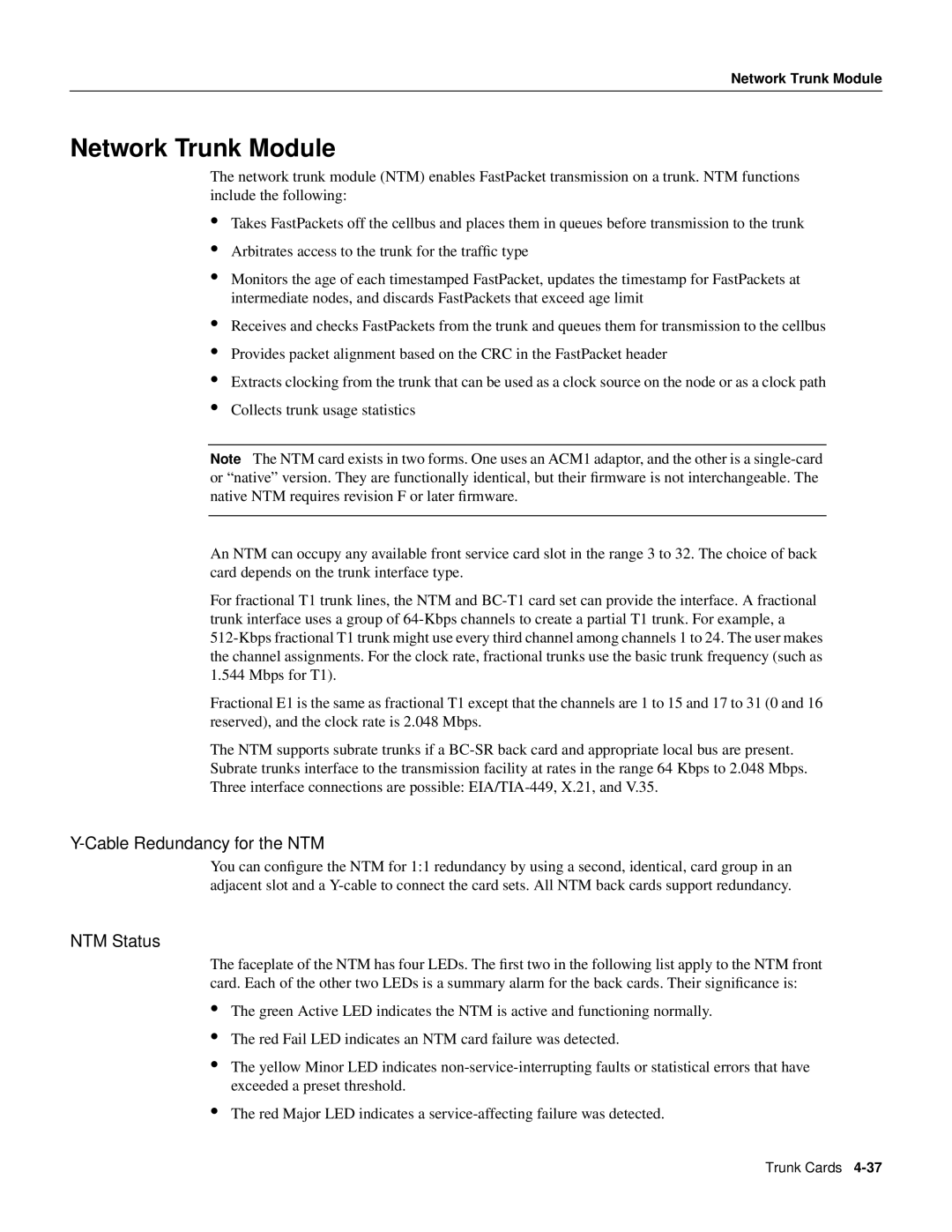
Network Trunk Module
Network Trunk Module
The network trunk module (NTM) enables FastPacket transmission on a trunk. NTM functions include the following:
•Takes FastPackets off the cellbus and places them in queues before transmission to the trunk
•Arbitrates access to the trunk for the traffic type
•Monitors the age of each timestamped FastPacket, updates the timestamp for FastPackets at intermediate nodes, and discards FastPackets that exceed age limit
•
•
•
•
Receives and checks FastPackets from the trunk and queues them for transmission to the cellbus
Provides packet alignment based on the CRC in the FastPacket header
Extracts clocking from the trunk that can be used as a clock source on the node or as a clock path
Collects trunk usage statistics
Note The NTM card exists in two forms. One uses an ACM1 adaptor, and the other is a
An NTM can occupy any available front service card slot in the range 3 to 32. The choice of back card depends on the trunk interface type.
For fractional T1 trunk lines, the NTM and
Fractional E1 is the same as fractional T1 except that the channels are 1 to 15 and 17 to 31 (0 and 16 reserved), and the clock rate is 2.048 Mbps.
The NTM supports subrate trunks if a
Y-Cable Redundancy for the NTM
You can configure the NTM for 1:1 redundancy by using a second, identical, card group in an adjacent slot and a
NTM Status
The faceplate of the NTM has four LEDs. The first two in the following list apply to the NTM front card. Each of the other two LEDs is a summary alarm for the back cards. Their significance is:
•The green Active LED indicates the NTM is active and functioning normally.
•The red Fail LED indicates an NTM card failure was detected.
•The yellow Minor LED indicates
•The red Major LED indicates a
Trunk Cards
